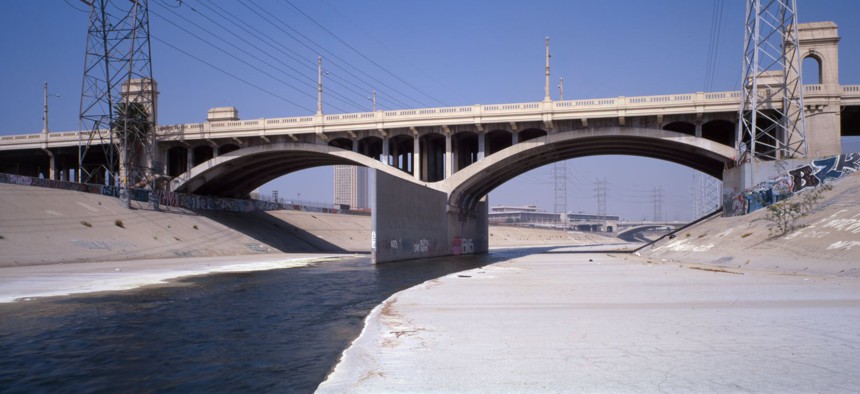Connecting state and local government leaders
In order to create vibrant riverside communities, tax-increment financing may be needed to make the bold riparian vision a reality.
How many billions of dollars will be needed to restore the concrete-lined, barely moving Los Angeles River as an ecological, cultural and economic force in the life of the nation’s second-largest city? And, just as important, where will the money come from?
Answering these questions is crucial to realizing the ambitions of planners who hope to see the concrete vanish in favor of a riparian habitat worthy of the name—with green spaces for recreation, water enough for kayaking or fishing, and revival of long-neglected neighborhoods along the river’s path.
The federal government will contribute some money, but the vast majority of the funds will have to come from local sources. And thanks to a new law enacted about 18 months ago, Los Angeles and neighboring cities may be able to generate large sums to restore the river from their own resources.
California has been a pioneer in developing financing techniques variously called “value capture” and “tax-increment financing.” These money-raising systems allow bonding against future revenues projected from real estate development over periods of up to 45 years.
In the Golden State, the Enhanced Infrastructure Financing District legislation found an early user in the city of West Sacramento , which was looking for ways to develop infrastructure that in turn would attract development of office buildings, residential neighborhoods and retail stores.
Bonding against revenues from future real estate development has also been used in the New York metropolitan area, notably in connection with the financing of the extension of the No. 7 subway line on Manhattan’s West Side. It could also play a big role in ambitious proposals to expand transportation infrastructure across the New York City metropolitan area, as Route Fifty has previously profiled .
This form of infrastructure financing, new and complex, won’t be quickly understood and adopted across California and elsewhere. But with both federal and state coffers increasingly bare, it is one of the very few bright lights in public finance.
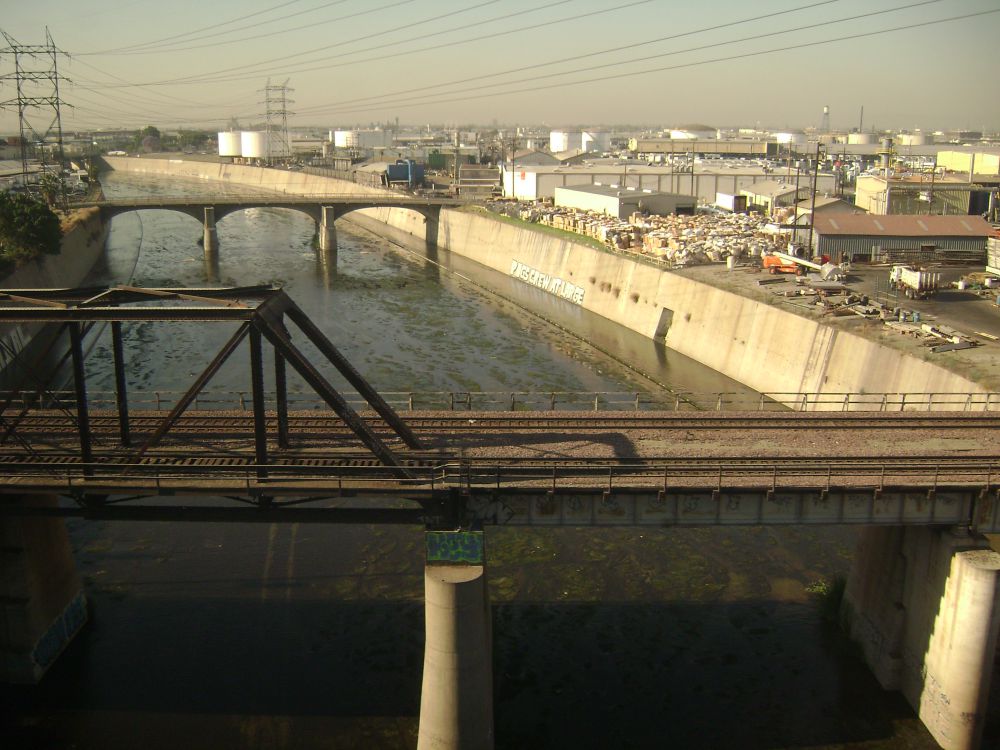
“I’m convinced that we can’t look to higher levels of government and that these techniques for relying on locally generated funds is the answer all across the country,” said Mark Pisano, a professor of the practice of public administration at the University of Southern California who served for 31 years as executive director of the Southern California Association of Governments (SCAG), the nation’s largest regional planning agency.
Guesstimates put the cost of reclaiming the 51-mile concrete-lined river at $100 million a mile, more than $5 billion in all. Restoration is an important start, but the more ambitious goal of creating newly vibrant communities along the waterway will require many billions more in locally financed infrastructure to support new and improved housing, commerce and recreation along the waterway.
L.A.’s Walled-Off River
U.S. cities in recent times have seen their rivers and waterfronts as prized resources, magnets for recreation and also for development.
Many cities, from San Francisco to Baltimore and even struggling Detroit have have found the money to revitalize their waterfronts in recent times.
Analysts have compared what might be achieved in Los Angeles to San Antonio’s Riverwalk and San Luis Obispo’s Downtown Creekwalk, but those projects are much smaller than what has been proposed in Los Angeles.
The L.A. River has a darker story than most. Prone to flooding during heavy rains, the river wreaked much destruction along its path for many years.
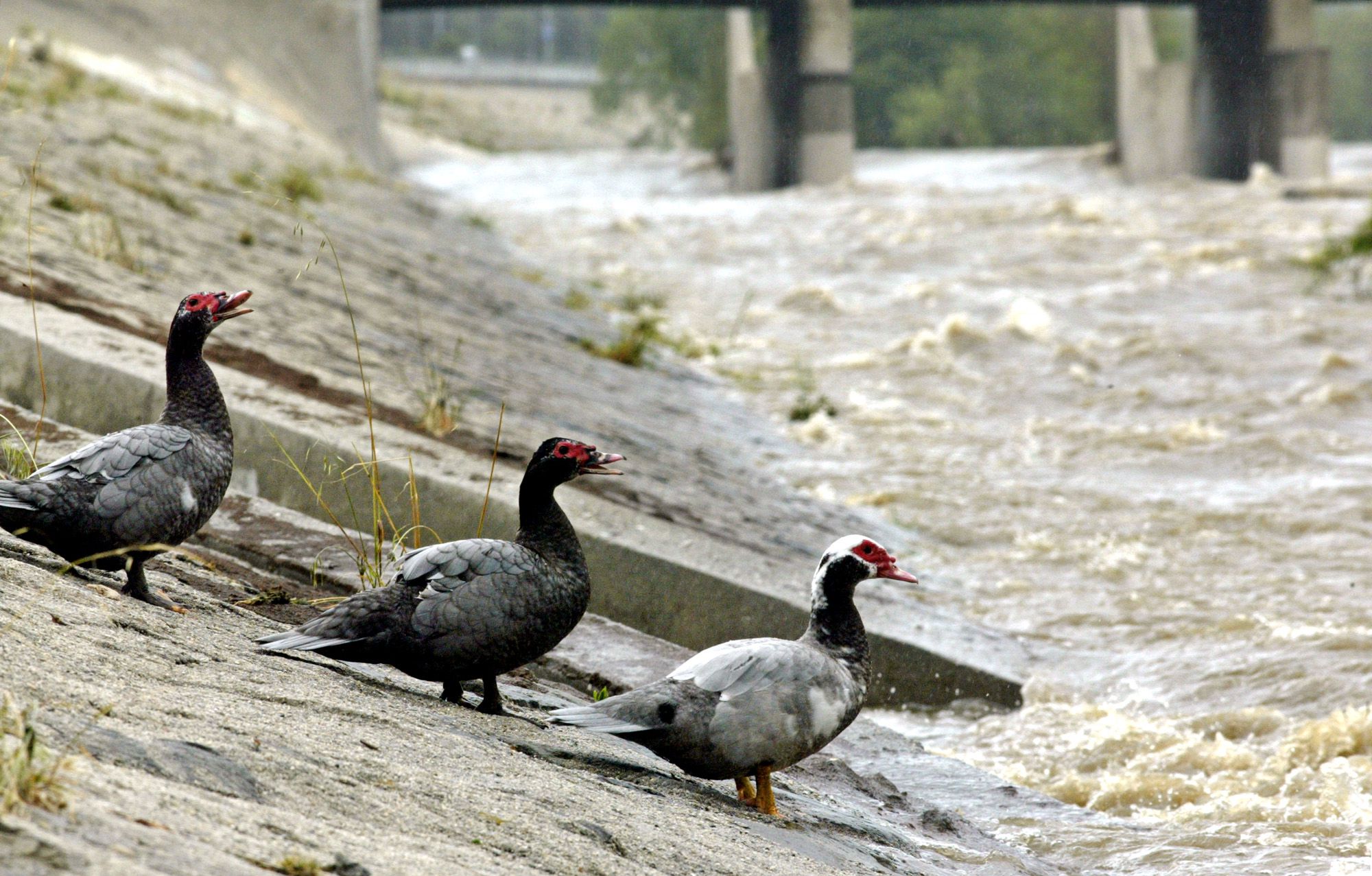
California periodically experiences what are called “ atmospheric rivers ,” which channel high amounts of moisture from the Pacific Ocean into California and have created megafloods, most notably in the winter of 1861-62, when much of the Central Valley was turned into an inland lake after 43 days of rain. “Sixty-six inches of rain fell in Los Angeles that year, more than four times the normal annual amount, causing rivers to surge over their banks, spreading muddy water for miles across the arid landscape,” according to Scientific American .
Less severe floods can still be catastrophic, and the L.A. River has seen its fair share of disasters since.
A flood in 1914 caused $10 million in damages throughout the developing L.A. Basin and brought a public outcry for action. Dams were built in the 1920s, but they were not sufficient to prevent major downstream flooding. Two more destructive floods in the 1930s brought the Army Corps of Engineers to the rescue.
The Corps took the lead in channelizing the river, beginning in 1938. By 1960, a 51-mile engineered waterway was completed, lined with concrete for most of its length.
Hydrologist Mark Hanna recently told Pacific Standard that without channelization of the river, the L.A. Basin could have seen significant widespread flooding events in 1983, 1998, 2005 and 2006.
Now the river is “a bleak and dispiriting 51-mile channel that winds its way through fields, suburbs, dark city corners and industrial wastelands from the San Fernando Valley to the Pacific Ocean, as The New York Times put it in an article last year. “Not many people even know it is there.”
Many players in the Los Angeles region have worked for years on plans to revitalize the river and adjacent lands which by and large have been consigned to commercial uses that are not inviting to residents who might have been river users.
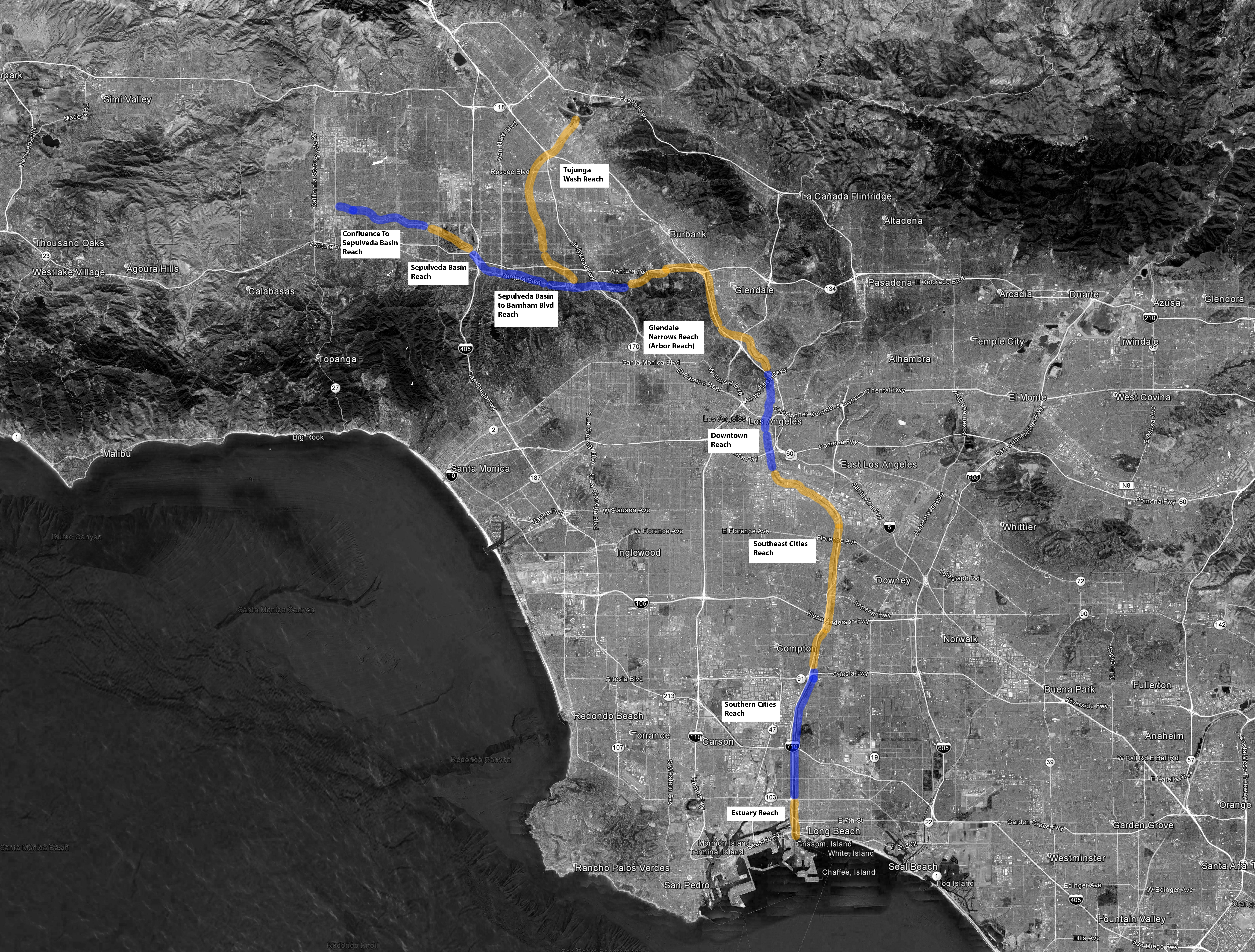
The latest group was just formed on April 5, when California Natural Resources Secretary John Laird announced 37 appointments to the new Lower Los Angeles River Working Group , created by recent state legislation to develop a revitalization plan for the Lower Los Angeles River and its tributaries. “We’ve got an opportunity to reimagine a concrete channel that runs through California’s biggest urban center and bring parks, greenery, and wildlife to communities starved of such amenities,” Laird said in a statement.
This is hardly the first such effort. A Los Angeles County Master Plan was approved by Board of Supervisors in 1996 after four years of work. The Los Angeles City Council, in 2002 created an Ad Hoc River Committee, chaired by recently retired councilman Edward P. Reyes, whose sprawling First District includes several miles of the river.
Reyes was a leader in complex proceedings that led up to approval by the city of the city’s Los Angeles River Master Plan in 2007. He participated in two years of meetings that gauged what communities along the river would like to see done. And since then, slow progress has been made, including acquisition of two major railyard sites whose decommissioning and improvement will improve the quality of the water in the river, and provide for stormwater capture and other benefits.
Los Angeles Mayor Eric Garcetti’s 2016-17 budget for the city, unveiled on April 20, includes $60 million to purchase another big railroad yard from Union Pacific—a proposal cheered by river restorationists. Garcetti proposes to raise money for the purchase from the Municipal Improvements Corporation of Los Angeles (MICLA), which allows the city to borrow money and pay it back over time.
City officials were excited when, after years of deliberations, the Civil Works Review Board of the U.S. Army Corps of Engineers last July approved a $1.3 billion contribution toward restoring a key, 11-mile stretch of the river. But the money still needs approval from Congress, and if that comes, the city will have to come up with matching monies estimated at $500 million to more than $1 billion.
Small projects, meantime, are proceeding along the river, many with encouragement and sponsorship of the Los Angeles River Revitalization Corporation, a nonprofit established by the 2007 Master Plan to help build enthusiasm for and implement aspects of the river restoration effort.
RiverLA , as it’s called, has undertaken what executive director Omar Brownson calls “Proof of Concept” projects designed to demonstrate how such projects as a bicycle/equestrian/pedestrian bridge might work. One that’s actually under way is called the Rio Vistas project , which has enlisted high school students to help clear some 27 streets that dead end into the L.A. River in the Frogtown neighborhood. RiverLA hired a landscape designer to work with the students to beautify these dead-end roads.
The Longer View
The Rio Vistas project is certainly commendable as a means of engaging citizens in the future of the river. But it’s a small-scale project that does not require funding on a scale needed for larger river restoration efforts.
RiverLA, however, does not lack for grand ambition. As it has matured over the past few years, the nonprofit has promoted more ambitious projects, including the idea of a bicycle trail that would run the 51-mile length of the river. And there’s prospect of moving ahead on this idea, because the Garcetti has proposed earmarking $425 million to pay for it in a ballot measure for this fall that would extend the existing city sales tax.
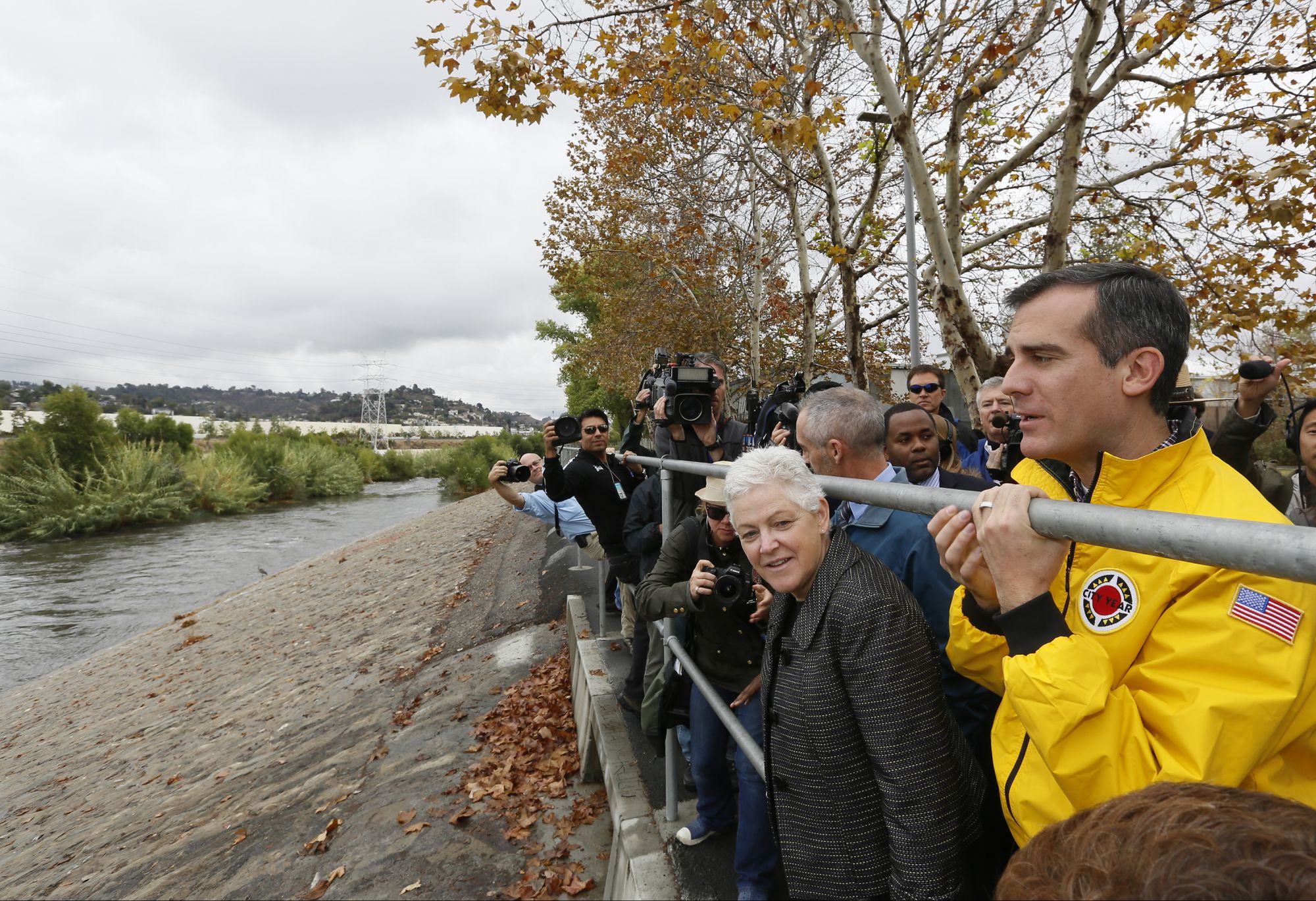
The Los Angeles River Master Plan covered only the 32 miles of the river that are within the city boundaries, and Brownson and his colleagues perceived a need to “create a conversation about all 51 miles,” he said in an interview. “There are 15 cities, and county, state and federal jurisdictions along the river—and the river knows no political boundaries.”
So RiverLA recruited the famous architect Frank Gehry , a Los Angeles resident, to develop a compelling new vision of the entire length of the river.
Gehry is working pro bono and “is excited to be working on a project so important to his hometown,” said Brownson. The architect has spent more than a year studying technical requirements of river usage, especially the need to maintain its flood control capabilities. His staff has attended more than 100 meetings Brownson has organized of public officials, agency technical experts, community groups and others.
Gehry is donating his time, and has earned the gratitude of top officials including Mayor Eric Garcetti, who told The New York Times last year:
“He would elevate this so the civic elite of L.A. realizes this is not a hobby of the activists but one of the grand projects of our time. Los Angeles is what made him who he is, and I think in the twilight of his life, he wants to leave a number of things that connect him to his home.”
Gehry’s role hasn’t been universally welcomed, as The Times reported . Although he hasn’t unveiled a comprehensive plan, longtime restoration advocates fear that he will focus on economic development more than habitat restoration, and that his plans may imply gentrification of neighborhoods adjacent to the river.
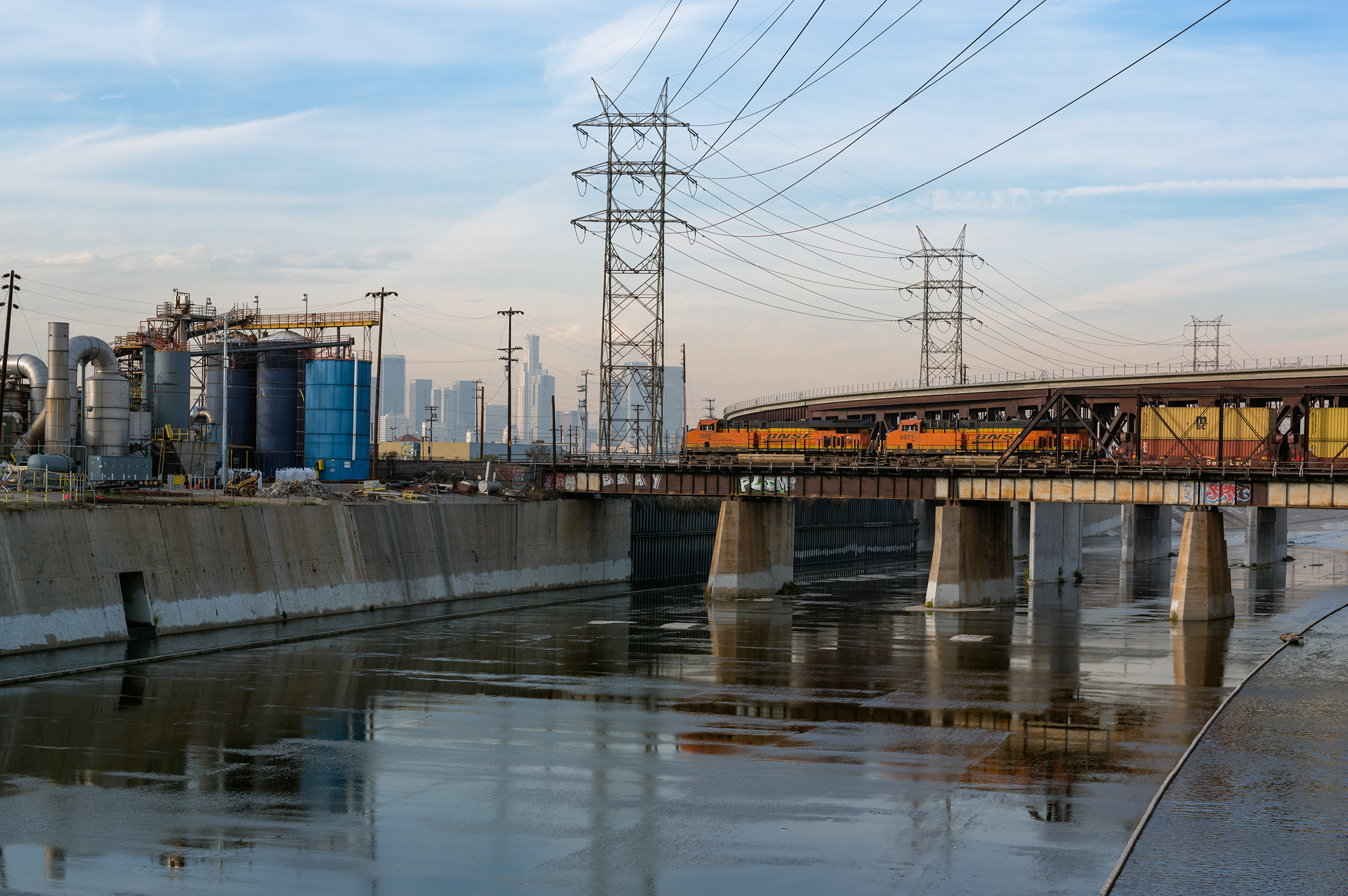
Lewis MacAdam, a poet and journalist who long has headed Friends of the Los Angeles River, was outspokenly critical last September. Reyes too is skeptical. The two or more years of work to solicit the views of today’s river neighborhoods must not be cast aside, Reyes said. He voiced hope that Gehry would build on the communities’ contribution to the Master Plan—and he acknowledged that Gehry’s reputation will help bring new advocates to the cause.
River restoration narrowly defined may cost only about $5 billion, but many billions more will be required to establish vibrant communities around the river—to turn the river, in Reyes words, “from the back yard to the front yard.”
Where’s the Dough?
All the planning means little, said Pisano, the USC professor, unless funding can be found to do the work. Pisano views Gehry’s work as an “essential” step toward generating investment, because it can generate excitement about the potential for private investment and profit along the river’s corridor.
Pisano, present at the creation of the state’s Enhanced Infrastructure Financing program, believes that EIFD techniques are an important answer to the river’s financing challenge.
Reyes, who chaired the State Assembly’s Land Use and Planning Committee, was an advocate as well before his term-limited career in the Assembly ended in 2013. Now, the council’s principal advocate of EIFD financing is Assemblyman Mitch O’Farrell, who began work on the idea while serving on Garcetti’s staff. O’Farrell was elected to replace Garcetti in the 13th District once his boss became mayor.
As mayor, Garcetti has continued to pursue the EIFD idea, assigning Jan Perry—who ran against him—to work on it in her capacity as General Manager of the city’s Economic and Workforce Development Department.
Under California’s SB 628, EIFDs can be established as separate government entities to undertake a wide variety of infrastructure projects of communitywide significance.
Cities and counties can establish them, as happened in West Sacramento to address a particular area of the city. The law also provides for establishment of “Joint Power Authorities” to govern multijurisdictional projects.
The idea is that new or improved infrastructure will enable more private investment and that this in turn will produce more tax revenues that can finance costs of the infrastructure. Most significantly, the law allows EIFDs to issue bonds against future revenues anticipated from the economic development—and to project such revenues up to 45 years out. Thus the bonds would allow a lot of up-front spending on infrastructure needs.
An issue for L.A. River planners is that most of the land along the river is in private hands. No use of eminent domain is envisioned, according to Reyes, so the job will be to persuade current landowners to take the risk of improving or building new facilities.
Brownson observes that other major redevelopment projects, such as the Presidio in San Francisco and the Brooklyn Navy Yard in New York City, have had public lands on which to build. “With most of such projects, the government can contribute either land or money,” he said. “Los Angeles has neither.”
There’s a patchwork of public land along the river, Brownson noted—about 1,000 acres along the 51 miles. That’s enough to get started with creating green spaces and the bike path, he said. Brownson notes that measures pending or proposed by various public authorities could contribute to the stack of funding—perhaps $200 billion over the next decade—needed for the river. They include: a state parks and water bonding proposals, county initiatives to finance parks, transportation and drought resilience, a cap and trade fund, as well as EIFDs that may be created.
These—and a new state law, A.B. 530 , sponsored by Assembly Speaker Anthony Rendon to promote planning in the cities along the river—have created a “unique political moment for the river,” he said.
Perry has sought to capitalize on the moment by hiring HR&A Advisors , an industry-leading urban development consulting firm, to outline how one or more EIFDs could be structured. EIFDs could offer zoning changes or other inducements to entice private development.
Reyes cited one example: allowing construction of higher apartment buildings. Perry emphasized that development along the river would not only attract or retain businesses, and provide new access to existing businesses, but also provide for better housing. A portion of revenues from the development and consequently higher tax revenues would be reserved to subsidize low-and-moderate income housing, she said.
And Perry also emphasized that restoration of the river must have “positive environmental effects—to attract wildlife, to allow for better capture of stormwater, to become a “beautiful attraction, the jewel in the crown” of redevelopment.
Timothy B. Clark is Editor at Large at Government Executive’s Route Fifty.

NEXT STORY: Low-cost beacon solution keeps tabs on firefighters
